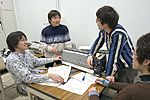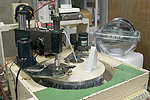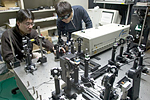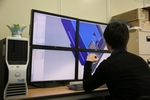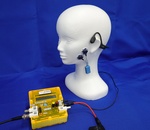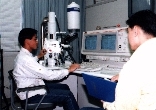The Design and Integration Area aims to develop inherent techniques and methodologies for integrating artifacts and their lifecycles through design and manufacturing.
Subareas
Design Engineering
Fujita & Nomaguchi Lab.
Toward creative product design and development, this laboratory is in charge of research and education of design theories, design methodologies and computer-aided design technologies for realizing comprehensive and systematic design process, in which all issues, such as value, function, structure, cost and time, must be integrated.
Precision Machining
Enomoto Lab.
The Precision Processing Laboatory conducts education and R&D activities of precision / ultra-precision machining, especially cutting, grinding and polishing.
Nano Measurement in Production
Takaya & Mizutani Lab.
We integrate nano measurement and fabrication in order to establish the highly developped nano production system. Our research are based on the laser applied measurement and fabrication techniques. One of the typical research topics is developping nano-CMM system for nano in-process measurement. Optical radiation force is applied for controlling the sensitive non-contact probe in the integrated nano maching system. This probe is expected to realize better than 10nm resolution during 3-D coordinate measureing.
Sustainable System Design
Kobayashi Lab.
For realizing the sustainable society, Life Cycle Engineering Laboratory studies design theories and methodologies of product life cycles, especially from the holistic viewpoint of life cycles that contains product design, manufacturing, operation and service, reuse, recycling, and disposal.
Quality of Life Technology
Ino Lab.
We are studying various types of quality-of-life technologies based on human physiology, psychophysics, and biomedical engineering that can support the daily life and rehabilitation of persons with disabilities and elderly individuals through multidisciplinary collaboration. The research areas include assistive technologies for eating, mobility, and communication, healthcare techniques for prevention of frailty and lifestyle diseases as well as sensing and actuation devices for human augmentation.
Cooperative Area
Laser Materials Processing
Tsukamoto & Sato Lab.
Fundamental studies are performed concerning the development of joining, surface modification and removal processing with a laser beam. In particular, the mechanisms of joining and imperfection formation are clarified by the high-speed observation and measurement of laser welding phenomena with the optical sensors or transmission imaging techniques. Further studies of monitoring, sensing, adaptive control and simulation of processing, disimilar materials joining, hybrid welding, etc. are undertaken on metalic, ceramic or prastic materials to obtain a basic knowledge in producing high quality welds at all times.

